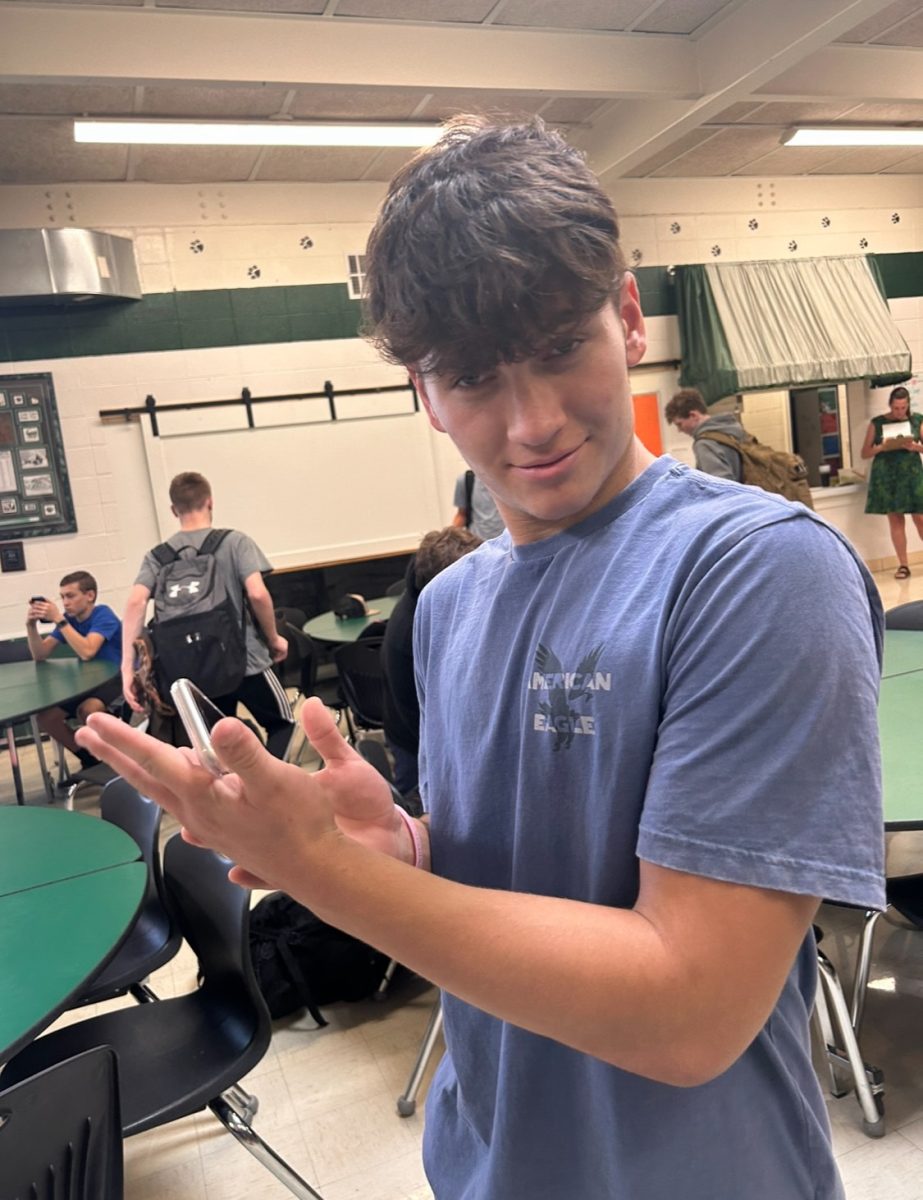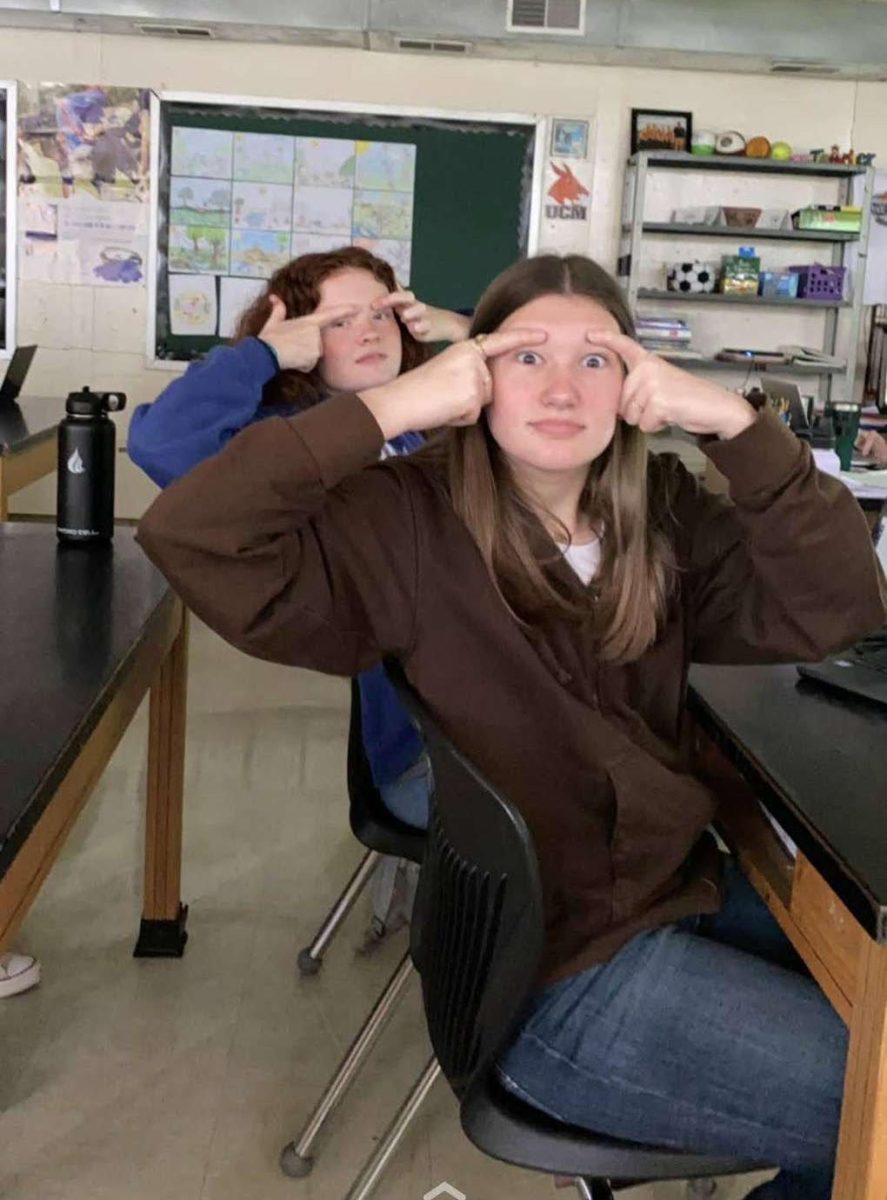Most students report that social media is undeniably an influence on their lives, some positive and some negative.
According to a survey of 85 Warsaw High School students, the top two most used social media apps are Snapchat with 38.8% and TikTok with 25.9%. Facebook and Instagram were tied with 11.8% each. Students were also asked what their screen time is, or their daily average time, used on social media. The survey found that the majority of students responding, 38.8%, use their phones and social media for up to three hours daily while 34.1% of students tend to use their phones four to six hours a day.
Some students have a hard time staying off social media. They tend to get distracted from homework and everyday life.
Junior Garret Ferguson believes social media has a positive impact on his life. Ferguson said he uses social media “to talk to people and for entertainment.” Ferguson’s weekly screen time is 35 hours. Ferguson claims that his most used social media app is Snapchat, which he is on for eight hours a day.
“Me, personally, social media is not a negative impact on my life. Although, I may overuse it.” Ferguson said.
Some students report social media usage to be a negative effect on their lives because it distracts them from other important tasks, such as school work.
Junior Jasmine Kahler said, “I think social media can affect teens’ mental health in both ways. Negative because seeing others with a “perfect” body or amazing grades makes you feel less important and more self conscious. Positively social media can encourage you to be better or work harder. Social media can inspire you or lift you up when you’re feeling down.”
“I don’t really get to talk to people much because I can only talk through social media (in my case, messenger) on my family computer. It makes me feel like I don’t really have as strong of a connection with my friends as they have with other friends. It makes me feel a little bit left out,” sophomore Eliana Jensen said.
Many people think that cell phones and social media are becoming an addictive negative influence on younger generations. However, Harvard researcher Mesfin Awoke Bekalu suggests that social media can be positive for mental health. He reported his findings in a 2020 article “Social media use can be positive for mental health and well-being” published on the Harvard School of Public Health webpage.
“We know that having a strong social network is associated with positive mental health and well-being. Routine social media use may compensate for diminishing face-to-face social interactions in people’s busy lives. Social media may provide individuals with a platform that overcomes barriers of distance and time, allowing them to connect and reconnect with others and thereby expand and strengthen their in-person networks and interactions. Indeed, there is some empirical evidence supporting this,” Bekalu said.
The research found that it was the way social media was used, not duration, that could lead to negative outcomes.
“On the other hand, a growing body of research has demonstrated that social media use is negatively associated with mental health and well-being, particularly among young people—for example, it may contribute to increased risk of depression and anxiety symptoms,” Bekalu wrote. Social media can both positively and negatively affect the youth.
Many students report a positive experience on social media and a feeling of connection.
“It opens me up to different ideas and places. I find myself learning new things every day due to social media,” sophomore Elsie Hughes said.
“I use social media a lot for school work, entertainment and to message or communicate with people,” freshman Lillianna Perez said. Perez has a screen time of four hours a day. Perez mentioned she uses social media a majority of the time before school.
Sophomore Jessie Bilderback, is very invested in Instagram. Bilderback finds a use for Instagram during her lunch shift, and after practice. She is often on social media for two hours a day.
“Social media swayed my opinion depending on information that is posted,” Bilderback said. Bilderback’s screen time is an average of four to five hours a day.
Social media and cellular devices carry an affect on many people. Research shows that phones are regularly used. All in all, as social media evolves, the more the desire for young adults to be sucked in.







